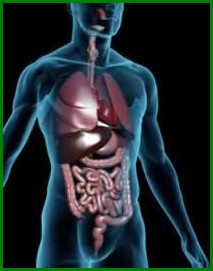Therapeutic Gastroenterology Twig VN, Yabluchansky NI Panciuc SN, LM Pasieshvili The therapeutic gastroenterology / edited V.N.Hvorostinki and N.I.Yabluchanskogo,, Kharkov, -1998.
Twig VN, Yabluchansky NI Panciuc SN, LM Pasieshvili The therapeutic gastroenterology / edited V.N.Hvorostinki and N.I.Yabluchanskogo,, Kharkov, -1998.
The book presents successively anatomofizi-logical data on the digestive organs, symptomatology and sindromologiya digestive diseases, clinical disease of the esophagus, stomach, intestines, gallbladder and biliary tract, pancreas and liver, principles of therapy and most commonly used medicines in gastroenterology clinic.
For gastroenterologists, internists, medical interns and students of medical faculties.
Table of contents
Foreword
Chapter 1. Anatomy of the digestive system
Chapter 2. Physiology of the digestive system
Chapter 3. Symptomatology and disease sindromologiya
of the digestive system
Chapter 4. Diseases of the esophagus
Chapter 5. Diseases of the stomach and duodenum
Chapter 6. Bowel disease
Chapter 7. Liver disease
Chapter 8. Diseases of the gallbladder and biliary
ways
Chapter 9. Chronic pancreatitis
Chapter 10. The main principles of treatment and most frequently
drugs used in
gastroenterology clinic
Literature
Foreword
The therapeutic gastroenterology - one of the most extensive and rapidly developing areas of modern hospital. Therefore it is difficult to describe in a book without exception, the facts relating thereto, and, moreover, to provide a well-established New accumulated knowledge. Knowledge that does not just change the understanding of gastrointestinal diseases, but also entail, sometimes very radical revision of existing approaches to the management of patients.
And yet, we have shown the courage and took responsibility to write a book with deliberately ambitious title. In writing it we aimed to take into account the experience and the latest in the world of gastroenterology, as well as their own observations, which integrate the results of the multiple-gastroenterologiches FIR downtown.
The book starts out issues traditionally anatomical and histological and functional characteristics of the digestive system. In a chapter summarizes the main symptoms and syndromes. All subsequent chapters are devoted to diseases of the esophagus, stomach, intestines, gallbladder, pancreas and liver.
Much attention is paid to the differential diagnosis, course options, complications and outcome of these diseases as well as modern methods of therapeutic treatment.
An important and useful for practitioners in our view is a special chapter on the problems of drug therapy and the description of the most commonly used in medical practice medicines.
No doubt the comments and suggestions are essentially books which the authors will be greatly appreciated.
Nashville Digestive Disease Center VTS 03 1
Nashville Digestive Disease Center, PC is a gastroenterology practice involved in both diagnostic and therapeutic aspect of gastrointestinal diseases in a friendly, comfortable outpatient environment. Nashville Digestive Disease Center building also has American Endoscopy Center, P.C. which is a fully accredited Ambulatory Surgical Center that is licensed by the State of Tennessee, accredited by Medicare and American Association for Accreditation of Ambulatory Surgical Facilities, Inc.
The addition of an ambulatory surgical facility to the gastroenterology practice enables patients to have all their diagnostic studies and therapeutic interventions at one point of contact. This is achieved with state of the art equipment that is available at the center.
Nashville Digestive Disease Center, P.C and American Endoscopy Center, P.C. maintains excellence in diagnostic and therapeutic gastroenterology through the practice of evidence based medicine in gastroenterology. This mission is driven by the passion for excellence, compassion and love of care in an effort to meet the needs and expectations of patients, physicians, employees, payers and the community.
Our Philosophy:
(a). Maintain excellence in the course of diagnostic and therapeutic interventions at the center.
(b). Recognize and affirm the unique and intrinsic worth of each patient.
(c). Treat all patients with compassion, courtesy and kindness in an atmosphere of caring.
(d). Maintain absolute honesty, integrity and professional atmosphere to all patients in the course of delivering gastrointestinal services.
Visit us today for an answer to your gastroenterological problems and thank you for the opportunity to serve you.